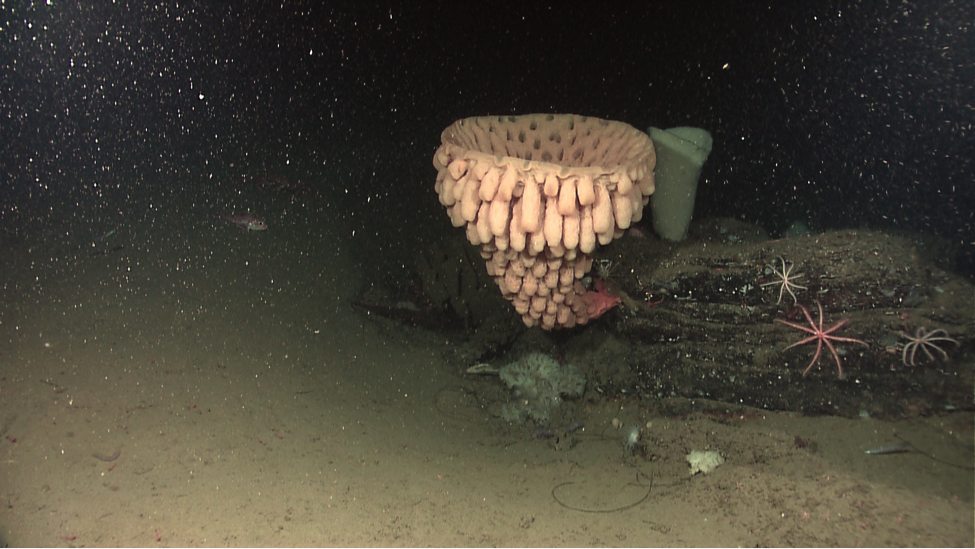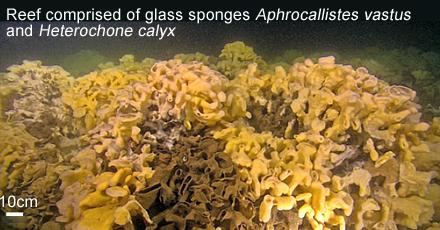A Swell Goiter! ImageGoiter sponges, like the one here, live in cold, deep waters – 300-4,000 feet—often on seamounts. These sponges average about three feet across but can grow to be nearly 10 feet across. Like most sponges they are filter feeders, pumping in seawater and extracting food particles from the water.
In the Pacific Northwest, goiter sponges and other glass sponges build deep-sea sponge reefs. The sponges’ dense, silica (glass) skeletons remain after a sponge’s death, forming an ideal surface for yet more sponges to grow on. The three-dimensional structure of these reefs is comparable to coral reefs and provides habitat for a diversity of creatures.
Sponge reefs off British Columbia have been aged to about 10,000 years old. These reefs can be huge —like coral reefs—covering as much as 180 square miles.
Glass sponge reef off British Columbia:
Here's a video of a goiter sponge expelling the fluorescent dye pic.twitter.com/ehXlkJhqlj
— Monterey Bay NMS (@MBNMS) August 27, 2016See Shape of Life video of the pumping action of sponges:
http://shapeoflife.org/video/sponges-filter-feeding-made-visible



















